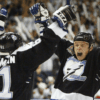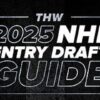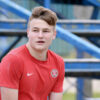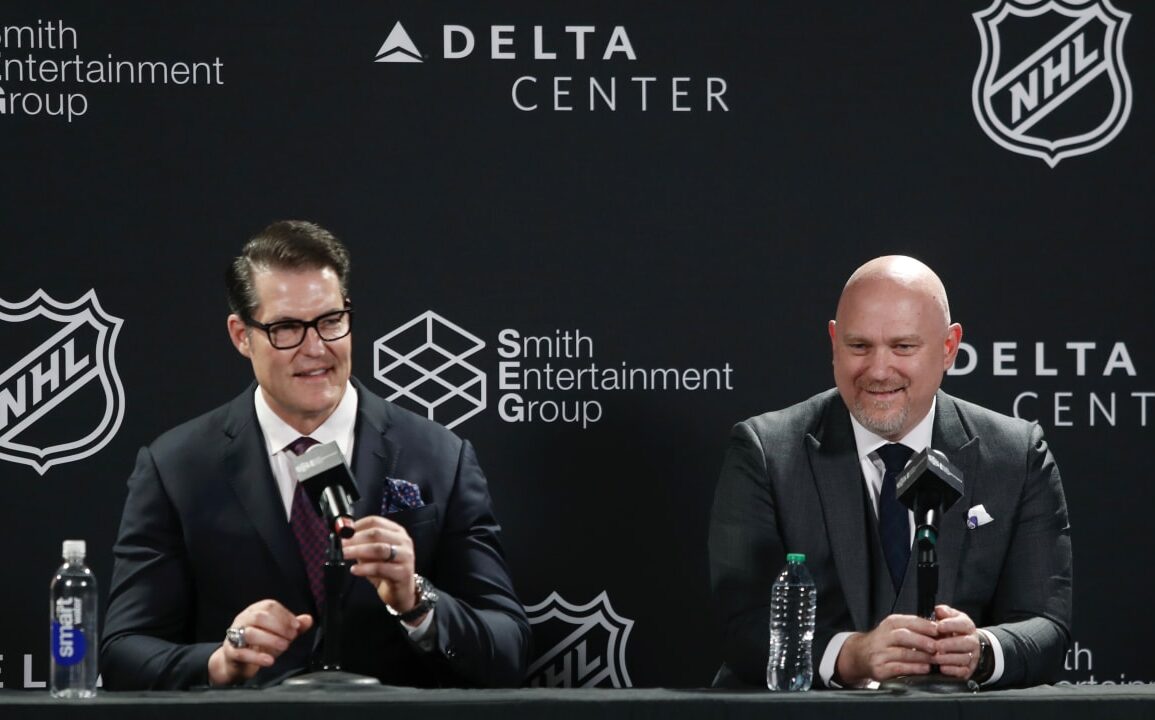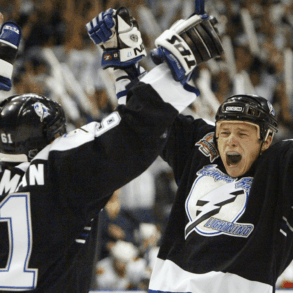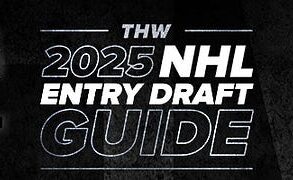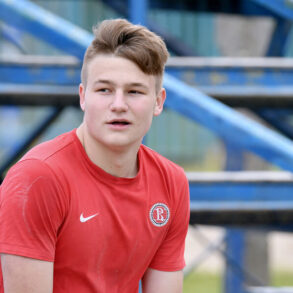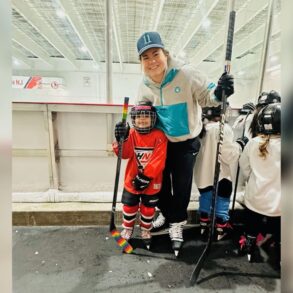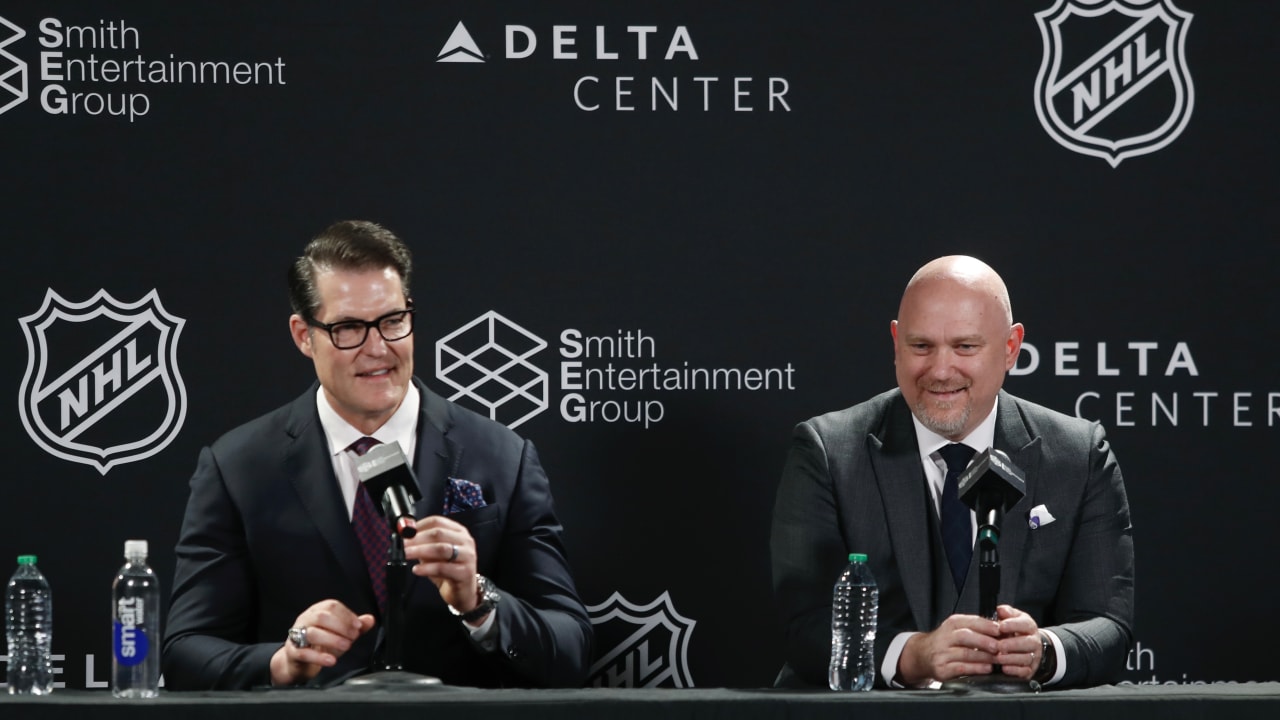
When Bill Armstrong took over as GM of the Arizona Coyotes in September 2020, he spent a year evaluating the hockey operations staff, the NHL roster, and the prospect pipeline. His judgment: the franchise was not built for sustainable success.
The following summer, Armstrong stripped the roster to its studs, amassed draft picks, and gave the amateur and pro scouting staffs that he assembled over two seasons a simple but challenging directive: Find good players and keep stacking one after another.
In the ensuing four seasons, Armstrong’s amateur scouting staff has drafted 42 players. Some players such as Logan Cooley, Dylan Guenther, Josh Doan and trade-rights acquisition Jack McBain are already making an impact at the NHL level. Others such as Dmitri Simashev, Daniil But, Artem Duda, Maveric Lamoureux, Michael Hrabal, Tij Iginla and Cole Beaudoin may not be far away.
The pro scouting staff has also helped improve the team by identifying key trade and free-agents acquisitions including Karel Vejmelka, Sean Durzi, Mikhail Sergachev, John Marino, Olli Määttä, Michael Kesselring, Ian Cole, Kevin Stenlund, and Connor Ingram.
By continuing to add talent, the team has improved season over season, posting 57 points in 2021-22; 70 points in 2022-23; 77 points in 2023-24; and 89 points in its first season in Utah — a total that would no doubt have been higher had the newly rebuilt blue line not been besieged by injuries, including Durzi (missed 52 games), and Marino (missed 47 games).
Every coach and every player expects to make the playoffs every season, but a GM must take the long view when building a franchise. Nearly four years after Armstrong, assistant GM David Ludwig and the hockey operations staff began the rebuild, they are ready to set higher expectations for Utah in 2025-26.
When asked after the season finale in St. Louis if the playoffs should now be an expectation, rather than a hope, here is what Utah’s GM said.
“I think so, and I think they’re in our sights. There’s still more growth from our team that has to happen and there’s always things that you can’t foresee — injuries that can happen. Look at Colorado. One year, they made the playoffs and they absolutely crushed it. The next year, they were out, and I think they drafted Cale Makar. There’s always things that can trip you up but when you look through the pain we have endured and at the growth that we’ve had every year, you’d have to say that the playoffs are now in our sights.”
Evaluating the 2024-25 season
In the simplest of terms, Utah made great progress in 2024-25. The team’s stated preseason goal of remaining in the playoff hunt into March and even April was realized, and the team’s point total was the 19th best in the NHL, a mere two points behind the bottom two playoff teams in the Eastern Conference.
“Our goal was to take a step,” Armstrong said. “When you add 12 points to the previous year, you’ve done that.”
Diving a little deeper provides an even more impressive picture of the progress Utah made this season. Once Marino returned to the lineup on Jan. 14, Utah had the 13th most points in the league at 46. From the Four Nations Face-Off break onward, Utah was 12th with 32 points.
Two of the team’s core pieces, Cooley and Guenther, continued to progress. Guentehr has the seventh most career points of any player 22 or younger in the NHL, and Cooley is eighth, but they are second (Guenther, .743) and fourth (Cooley. 694) in points per game.
And from an analytics standpoint, Utah was among the league’s top 10 in a lot of important categories, per Sportlogiq.
Offense
Expected goals for: No. 6
Slot shot attempts: No. 4
Passes to the slot: No. 5
Slot shot attempts off the cycle: No. 3
Slot shots attempts off the rush: No. 9
Slot shots attempts off the forecheck: No. 17
Slot shots attempts off rebounds: No. 10
Creating offensive zone possession: No. 6
Defense
Expected goals against: No. 6
Slot shot attempts against: No. 3
Slot shots attempts against off rebounds: No. 6
Slot shot attempts off the cycle: No. 4
Slot shot attempts off the rush: No. 19
Slot shot attempts off the forecheck: No. 1
Limiting possession against: No. 3
“Nine teams in the league had above-average expected goals for and above-average expected goal against and we were one of them,” coach André Tourigny said. “We were just outside the top five.
“But numbers don’t say everything. There’s a lot of teams who have lesser numbers than us, but much, much better results. So we have to look at the reasons why we didn’t do better and figure out what we can do better.”
Offseason goals
Turning those sparkling analytics into points will be one of many topics the coaching and hockey operations staffs will examine this offseason as it evaluates every facet of the team, from individual players to systems and more general philosophies.
“We’ll do a deep dive as we always do,” Tourigny said. “For me, there’s no worse thing to say than ‘We do this because that’s the way we did it in the past.’ If we were not the best at it, why would you do it again? And if you were the best, make sure you keep progressing because there’s someone who’s pushing behind you. You cannot be complacent and just be happy about it because it was working.”
The coaching staff’s evaluation will, in turn, help guide the management staff when it builds its offseason shopping list.
“The evaluations you make may lead to some adjustments or some acquisitions,” Tourigny said. “Kevin Stenlund is a good example. When we evaluated our [2023-24] season, we needed to improve our faceoffs on the right side, our penalty killing, and our size. All of those things were part of the evaluation Bill and his group did and part of our debriefing.”
Utah won’t have a high draft pick in the first round unless they get lucky in the lottery, but that is a reality with which Armstrong is familiar from his days in St. Louis. In the 10 seasons Armstrong spent as the Blues’ director of amateur scouting (the final two as assistant GM), St. Louis never drafted higher than No. 20. The Blues still won the Cup in 2019.
“If you don’t have lottery luck, you’d better have a really incredible scouting staff,” Armstrong said. “That’s a huge component for us. When we landed at No. 3, we were able to get Cooley and that was a big moment for us. And when we were picking at No. 9 we got Guenther. We haven’t had the lottery fortune to get a top-two pick and get [Connor] McDavid or [Nathan] MacKinnon or [Auston] Matthews, so you’d better draft well. You’d better be able to cut with 1,000 knives.”
Like St. Louis did by adding centers Ryan O’Reilly and Brayden Schenn, Armstrong knows he must also acquire players in the offseason to bolster the roster.
“When you draft, you’re always short of something,” he said. “You’re drafting the best player available, not the best positional player. So when you do that, you sometimes end up short on something. We had to move Tage Thompson to get Ryan O’Reilly. You have to go after certain types of players you don’t have and I think we kind of did that during the summer when we attacked the defense and we went out and got Marino and Sergachev and Määttä.”
Having shored up the blue line, which is also rich in prospects, the management staff will turn its attention to the forward group this summer; specifically a scoring wing, maybe a center.
“Finishing was a weakness of ours all year,” Armstrong said. “We dominated at times. We were around it, but we had a hard time finishing on it, and it cost us a few games. It’s something we have to look at and see if we can improve, and see what’s out there to help us improve.”
Free agency may offer some possibilities on that front for a scoring wing, but a rising salary cap has allowed more teams to re-sign their own players so Utah may have to go the trade route.
It will be even harder to add a top-six center for the simple reason that teams don’t trade them or allow them to get to free agency. Aside from the St. Lous example, Jack Eichel and Tyler Seguin are rare cases in which a top-six center has changed hands over the past dozen years.
“I don’t mind where we’re at with our center position,” Armstrong said. “You’ve got [Cooley] at one, [Barrett Hayton] at two, [McBain] at three, and [Stenlund] at four with Cole Beaudoin coming, so it’s not a bad situation to be in, but you can always use centers.
“I don’t know if we can add something in the summer. You have to look and see what teams are thinking. That will be really interesting to see what’s available.”
What’s ahead?
Tourigny is in lockstep with Armstrong in saying that the rebuild is over, but just because Utah expects to challenge for a playoff spot in the coming seasons, that doesn’t mean the growth process is complete.
As Armstrong noted, Colorado won its division in 2013-14 with 112 points after drafting Gabriel Landeskog in 2011 and MacKinnon in 2013. The Avalanche then missed the playoffs three more years including a 48-point season in 2016-17 before drafting Makar in 2017 and finally winning the Stanley Cup in 2022 — more than 10 years after their rebuild began.
Here’s a look at some of the Cup winners from the past decade and a half, and how they progressed along the way.
Chicago began its rebuild in 2002. It made the playoffs for the first time in 2009, and won the Cup for the first time in 2010 (also 2013 and 2015).
Colorado began its rebuild in 2011, made the playoffs for the first time in 2014, but missed the playoffs six times between the start of its rebuild and winning the Cup in 2022.
Pittsburgh began its rebuild in 2001, made its first playoff appearance in 2007, and won its first Cup in 2009 (also in 2016 and 2017).
Tampa Bay began its rebuild in 2007, made its first playoff appearance in 2011, and won the Stanley Cup in 2020 and 2021, losing in the Final in 2022.
It should be noted that every one of the teams listed above won the NHL Draft Lottery and picked in the top two picks of the draft at least once — a luxury that Utah has never enjoyed, and one that clearly allows teams to select generational players.
Pittsburgh won the lottery in 2005 and selected center Sidney Crosby. A year earlier, the Penguins selected forward Evgeni Malkin at No. 2. Chicago won the lottery in 2007 and selected forward Patrick Kane. Tampa won the lottery in 2008 and chose center Steven Stamkos. A year later, the Lightning picked defenseman Victor Hedman at No. 2 overall. Colorado won the lottery in 2013 and selected center Nathan MacKinnon. Two years earlier, the Avs chose forward Gabriel Landeskog at No. 2.
Utah’s lack of past lottery luck underscores the need to find elite players later in the first round (Keller at No. 7, Guenther at No. 9) and via player acquisitions (Sergachev, Marino).
“To get into the top 10 best teams in the National Hockey League is really hard, and then to move up in the 10 is even harder,” Armstrong said. “What gets a little bit easier for us is we’re starting to get a little continuity where we have [Clayton] Keller and Guenther and Cooley and Hayts and all these guys that are kind of settling into their natural role.
“What people maybe don’t realize about our team is that our best players are young guys. Even our older guys are 25, 26, 27 so it’s a really good situation where you can still see a lot of growth with the team ahead.”
Tourigny is convinced that Utah’s players have the right character, work ethic and skill level to continue that growth.
“I’m proud of them,” he said. “I’m proud of the level of commitment, the way they work, the way they compete, the way they like each other, the way they fight for each other.
“When you look to the future and you have that kind of team who fight for each other and who love to be together, it just gives you some fuel. When you look at our future, you cannot do otherwise than to see that there’s brightness ahead of us.”
This post was originally published on this site be sure to check out more of their content.


